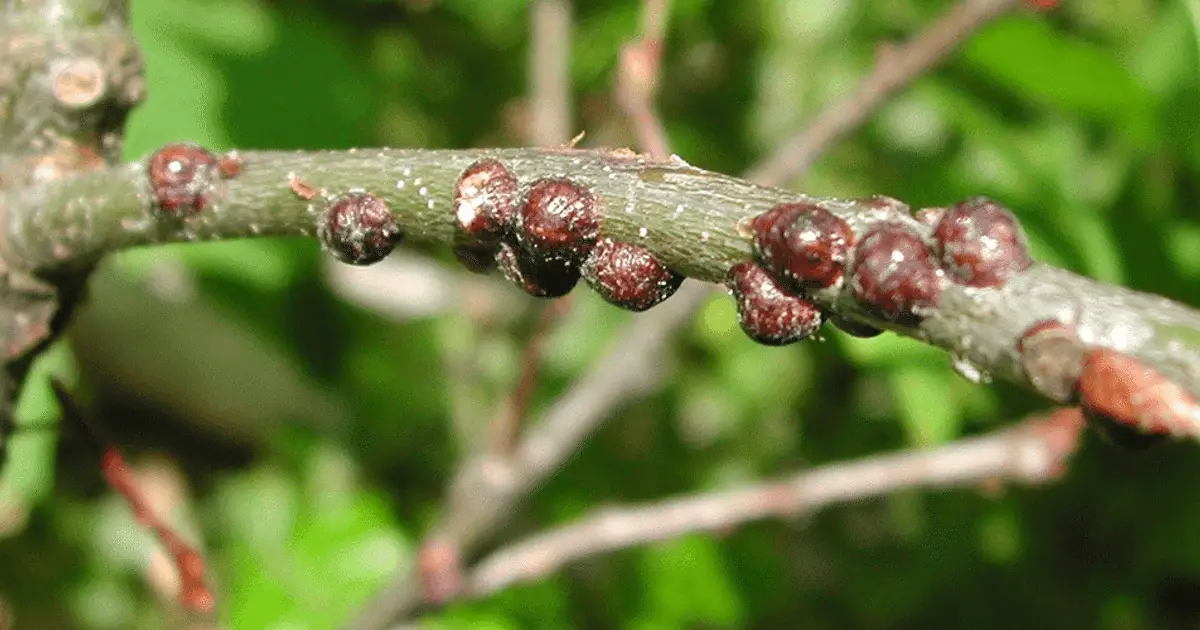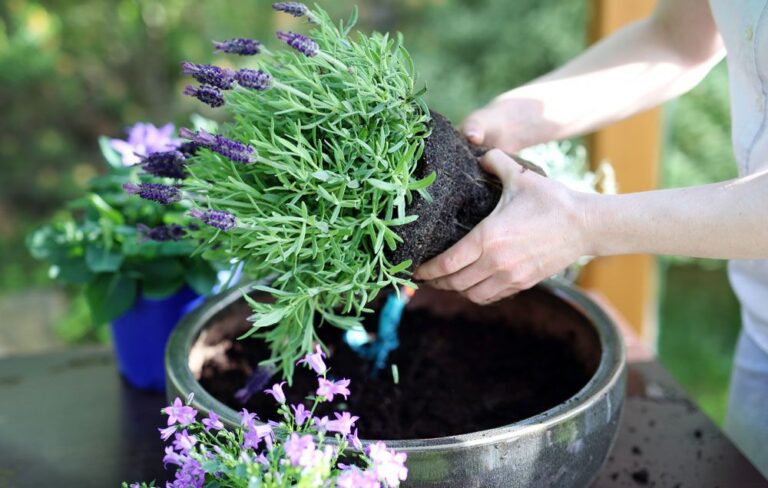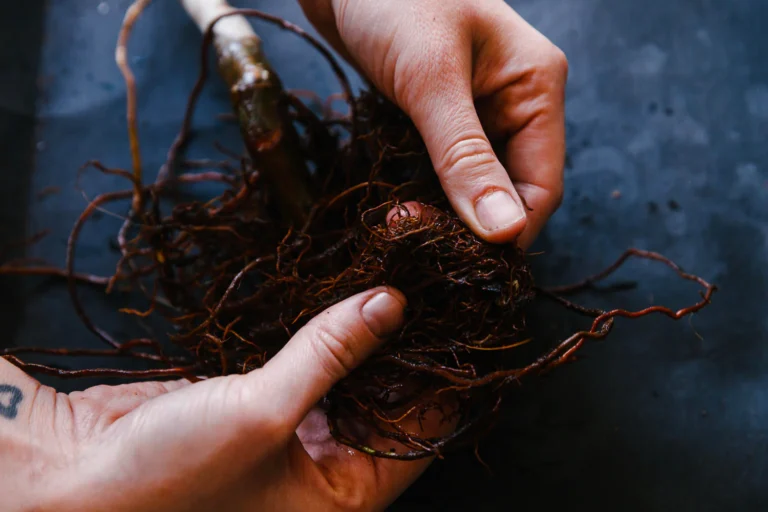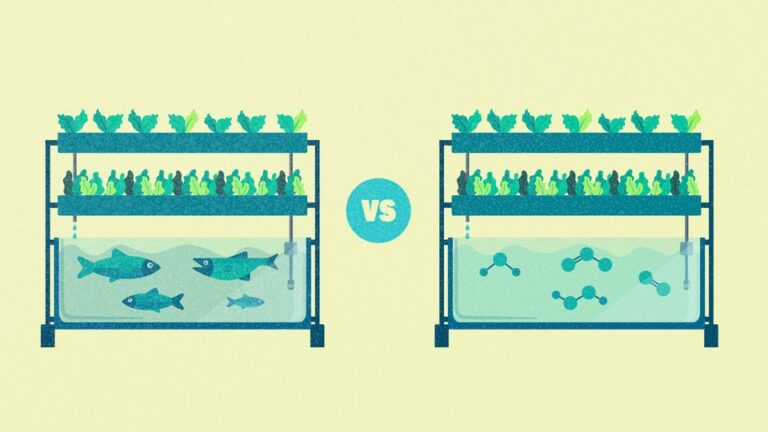Scale Insects: How to Control and Prevent These Harmful Pests
Did you know that scale insects can cause severe damage to your garden, draining the life out of your favorite plants? These tiny pests might be small, but they pack a punch when it comes to harming your garden’s health. In this blog, we’ll dive into the world of scale insects, exploring effective methods to control and prevent these pesky invaders. We’ll provide you with expert advice, backed by the latest research, to help you keep your garden thriving. Whether you’re a seasoned gardener or a beginner, understanding how to tackle scale insects is crucial. Read on to discover practical tips and strategies to protect your plants and ensure a lush, vibrant garden.
Table of Contents
Understanding the Threat: Exploring the Damage Caused by Scale Insects
Scale insects pose a significant threat to plants, causing considerable damage and potentially even death if left unchecked.
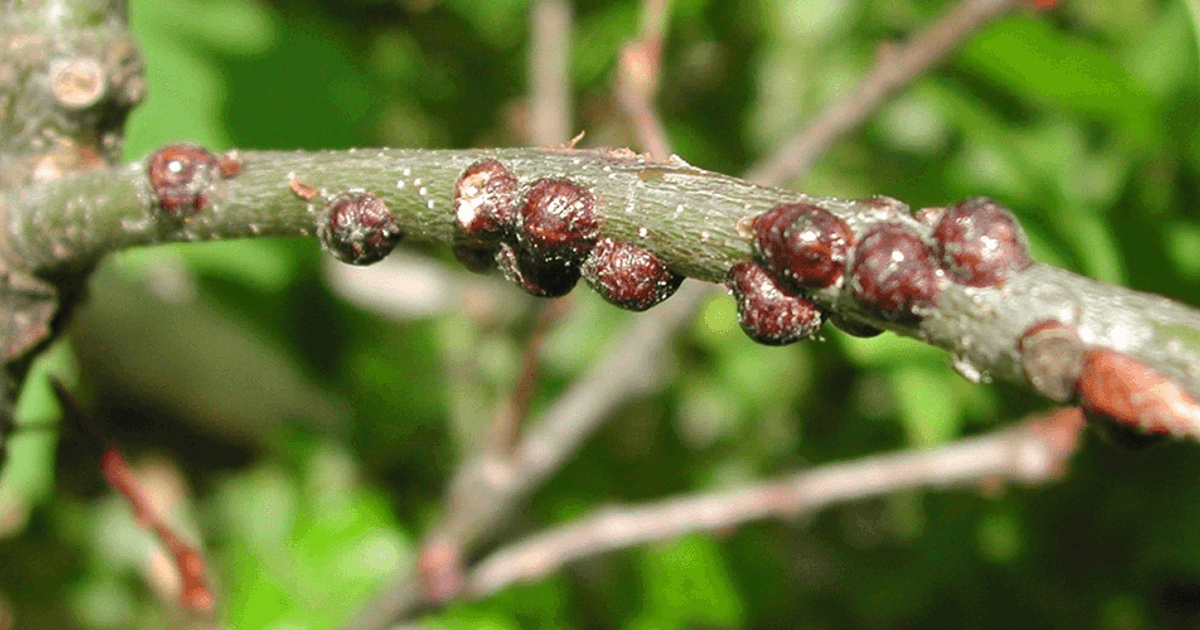
- Pest Description: Small, immobile pests that feed on plant sap.
- Affected Plants: Ornamental plants, fruit trees, and agricultural crops.
- Damage Signs: Yellowing leaves, stunted growth, premature leaf drop, distorted plant parts.
- Reproduction: Females lay eggs; nymphs move and feed before becoming immobile adults.
- Reproductive Cycle: Adults reproduce asexually, rapidly increasing population.
- Impact of Infestation: Severe scale infestations can cause significant plant decline or death.
- Prevention and Control: Essential for gardeners and plant enthusiasts to manage and mitigate damage from scale insects.
Identifying Scale Insects: A Guide to Recognizing Different Species
Scale insects are a common pest that can wreak havoc on plants in gardens and landscapes. One of the first steps in managing these pests is being able to identify the different species of scale insects. Each species has unique characteristics and may require specific management techniques.

- Size and Shape:
- Look for insects ranging from 1 to 5 millimeters in length.
- Identify the shape: circular, oval, or elongated.
- Color:
- Check the color: white, brown, black, or brightly colored.
- Markings:
- Note any unique markings or patterns on their bodies.
- Appearance on Plant:
- Look for a waxy substance that gives a fuzzy or shiny appearance.
- Identify if they appear flat or shield-shaped.
By following these steps, you can accurately identify the species of scale insect on your plants.
Life Cycle of Scale Insects: Insights into Their Reproduction and Development
The life cycle of scale insects is a fascinating process that sheds light on their reproduction and development. These tiny pests go through several stages as they progress from egg to adult, each phase presenting unique challenges for effective control. Understanding the intricacies of their life cycle can help gardeners and growers develop effective management strategies.
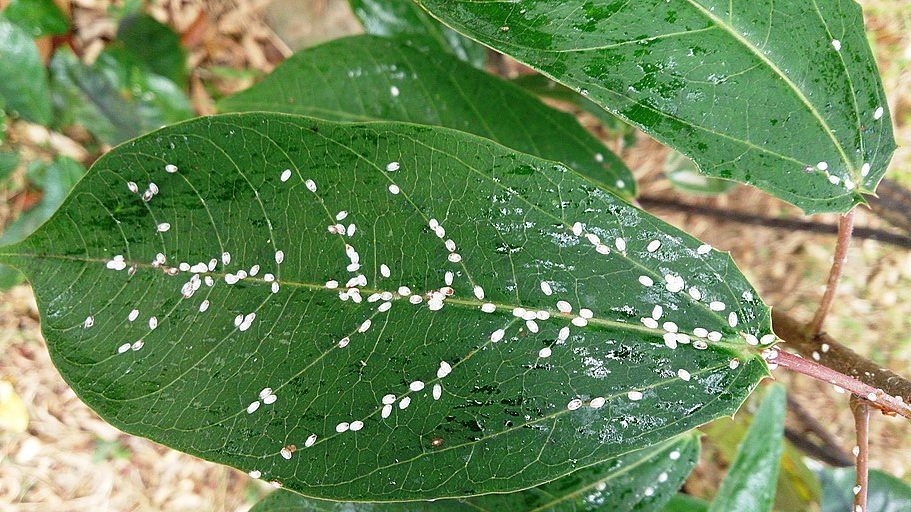
- Eggs are laid by female scale insects on leaves, stems, or bark, often covered by a protective scale.
- Eggs hatch into tiny nymphs called crawlers that actively seek a feeding site on the plant.
- Crawlers settle down and begin feeding, undergoing a series of molts as they grow.
- During molting, nymphs develop more and acquire adult proportions.
- Many species encase themselves in a protective waxy scale as they become immobile.
- Under the scale, insects continue feeding on plant sap, causing damage.
- Life cycle duration varies by species and environmental factors like temperature and humidity.
- Factors like temperature and humidity influence egg hatch time, nymph development, and population growth.
By understanding the intricacies of their life cycle, gardeners and growers can adopt targeted approaches to manage and control these pests effectively.
Having delved into the “Encyclopedia of Scale Insect Pests” by Takumasa Kondo, I found it to be an invaluable resource for anyone dealing with these troublesome pests in agriculture or horticulture. The comprehensive coverage of identification, biology, and management strategies offered profound insights into combating scale insect infestations effectively.
Supported by high-quality illustrations and practical guidance, the book served as a trustworthy companion in navigating the complexities of scale insect control. While the technical nature of the content may pose challenges for beginners, its authoritative authorship and educational value make it an essential addition to any entomologist’s or pest management professional’s library.
- Comprehensive Coverage: “Encyclopedia of Scale Insect Pests” offers extensive coverage of scale insect pests, providing in-depth information on identification, biology, ecology, and management strategies.
- Authoritative Author: Authored by Takumasa Kondo, a renowned expert in entomology, the book provides accurate and reliable information backed by scientific research and expertise.
- Practical Guidance: The book offers practical guidance on identifying and managing scale insect pests, including integrated pest management (IPM) approaches, cultural practices, and pesticide recommendations.
- High-Quality Illustrations: Featuring high-quality illustrations and photographs, the book aids in the visual identification of scale insect pests and their damage symptoms, enhancing the reader’s understanding.
- Educational Resource: Suitable for researchers, extension agents, educators, and practitioners in agriculture, horticulture, and pest management, the book serves as a valuable educational resource.
- Reference Material: With its comprehensive and up-to-date content, the book serves as a reliable reference for professionals and enthusiasts seeking information on scale insect pests and their management.
- Specialized Content: The book may contain technical terminology and concepts that could be challenging for beginners or general readers without a background in entomology or pest management.
- Limited Accessibility: As a printed book, accessibility may be limited compared to digital resources, particularly for readers outside the book’s distribution area or those preferring digital formats.
- Price: The cost of the book may be prohibitive for some individuals or organizations, especially considering its specialized focus and niche audience.
- Updates: Given the evolving nature of pest management practices and research, the book’s content may become outdated over time, necessitating periodic revisions or updates.
- Regional Focus: The book’s coverage may primarily focus on scale insect pests prevalent in specific regions or climates, potentially limiting its relevance to readers in other geographic areas.
- Complex Topics: Certain topics covered in the book, such as insect physiology or molecular biology, may be too complex or specialized for readers with limited background knowledge in these areas.
Signs of Scale Infection: Detecting Early Infestations in Plants
Early detection of scale insect infestations is crucial to preventing widespread damage in plants. By being vigilant and regularly inspecting your plants, you can identify signs of scale infection and take immediate action.
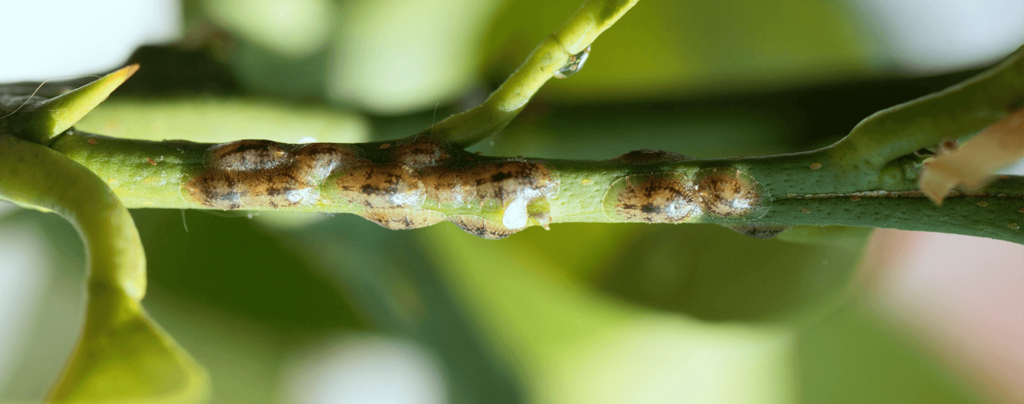
Look for small, oval-shaped bumps on plant leaves, stems, or branches.
Note the color variations: brown, black, yellow, or white.
Inspect the plant for a sticky substance known as honeydew.
Recognize that honeydew is a sugary excretion from scales feeding on plant sap.
Observe if ants are attracted to the sticky honeydew.
Check for the presence of sooty mold, a black fungus that grows on honeydew and can further weaken the plant.
So, if you notice a sticky film on your plants or surfaces nearby, it could be a sign of scale insects feeding.
Environmental Factors: How Temperature and Humidity Impact Scale Insect Infestations
Temperature and humidity play crucial roles in the infestation of scale insects. These environmental factors can significantly impact the development and spread of scale populations, affecting both their growth rate and the severity of the damage they cause to plants.
Temperature:
- High temperatures above 80°F (27°C) promote the reproduction and growth of scale insects.
- Warmer temperatures accelerate the development of scale insects, leading to increased infestations and plant damage.
- High temperatures can diminish the effectiveness of natural predators, allowing scale populations to thrive unchecked.
Humidity:
- High humidity levels above 60% create ideal conditions for the establishment and spread of scale colonies.
- Moist environments enable rapid reproduction and proliferation of scale insects, impacting plant health significantly.
- Low humidity levels can hinder the mobility and reproduction of scale insects, potentially reducing infestation levels.
Understanding the impact of temperature and humidity on scale insect infestations is essential for implementing effective control measures. By monitoring and adjusting these environmental factors, gardeners and horticulturalists can minimize the risk of scale infestations and protect the health of their plants.
Here’s a concise overview of how temperature and humidity impact scale insect infestations:
| Environmental Factors and Scale Insect Infestations | Description |
|---|---|
| Temperature Range | – Scale insects thrive in a moderate temperature range, typically between 70°F to 90°F (21°C to 32°C). |
| Temperature Extremes | – Extreme temperatures, both hot and cold, can stress scale insects, affecting their reproduction and survival. |
| Temperature and Life Cycle | – Warmer temperatures often accelerate the life cycle of scale insects, leading to increased populations. |
| Humidity Levels | – High humidity is favorable for scale insects, providing a moist environment that supports their feeding and reproduction. |
| Moisture-Related Issues | – Excessive humidity may lead to mold growth on the honeydew excreted by scale insects, creating further complications for plants. |
| Reduced Humidity Impact | – Low humidity levels can negatively impact scale insects, causing desiccation and limiting their ability to thrive. |
| Overwintering Survival | – During winter, scale insects often enter a dormant phase, and the right balance of temperature and humidity influences their survival. |
| Temperature-Dependent Mobility | – Scale insects are generally less mobile in cooler temperatures, making them more vulnerable to natural predators. |
| Impact on Plant Health | – Prolonged infestations due to favorable temperature and humidity conditions can lead to weakened and stressed plants. |
| Seasonal Fluctuations | – Infestation severity may vary with seasonal temperature and humidity changes, with peak activity during optimal conditions. |
Understanding how temperature and humidity influence scale insect behavior and development is crucial for effective management. Monitoring and adjusting environmental factors can play a role in preventing and controlling scale insect infestations on plants.
Natural Predators: Harnessing Biological Control Methods to Combat Scale Insects
Biological control methods have emerged as a promising solution for combating scale insects in a natural and sustainable manner. By harnessing the power of natural predators, we can effectively reduce the scale insect populations and restore the health of our plants. These predators, which include ladybugs, lacewings, and parasitic wasps, play a crucial role in keeping scale insect infestations in check.

- Introduce Ladybugs:
- Release ladybugs in your garden as they are voracious feeders of scale insects.
- Utilize ladybug larvae, which are particularly effective at hunting and consuming scale insects.
- Utilize Lacewings:
- Introduce lacewings to your garden; their larvae have powerful jaws and a strong appetite for soft-bodied insects like scale insects.
- Lacewings can quickly locate and eliminate scale insects, helping restore garden balance.
- Employ Parasitic Wasps:
- Introduce parasitic wasps that specialize in dealing with scale insects by laying eggs inside their bodies.
- As the wasp larvae develop, they consume the scale insects from the inside out, effectively reducing the scale insect population.
- Ensure Compatibility:
- Carefully introduce these natural predators into your garden.
- Ensure that they are compatible with your plants and the existing ecosystem.
- Monitor and Maintain:
- Regularly monitor the garden to ensure the predators are effectively controlling scale insects.
- Maintain a balanced ecosystem to support the long-term success of biological control methods.
By following these steps, you can effectively implement a sustainable and environmentally friendly approach to combat scale insects using natural predators.
Cultural Control Measures: Implementing Proper Plant Care to Prevent Scale Infestations
Proper plant care is crucial in preventing scale insect infestations and maintaining the health and vitality of your plants. By implementing cultural control measures, you can create an environment that is less favorable for scale insects to thrive.

- Ensure Optimal Growing Conditions:
- Provide adequate sunlight exposure to promote strong plant growth and vigor.
- Maintain proper watering practices to prevent plant stress; avoid both over-watering and under-watering.
- Ensure soil fertility is balanced; avoid over-fertilization which can attract scale insects.
- Regular Pruning:
- Inspect plants regularly and promptly remove infested branches or leaves.
- Make clean cuts during pruning to minimize plant stress and the risk of reinfection.
- Properly dispose of pruned material to prevent the spread of scale insects.
- Practice Good Sanitation:
- Remove fallen leaves and debris from around your plants to eliminate potential hiding spots and breeding grounds for scale insects.
- Regularly clean and disinfect gardening tools to prevent the accidental transfer of scale insects between plants.
By implementing these cultural control measures and prioritizing proper plant care, you can significantly reduce the risk of scale insect infestations and maintain a healthy garden. However, it is important to remain vigilant and monitor your plants for any signs of scale insects, as early detection is key in efficient pest management.
Physical Removal Techniques: Manual Methods for Eliminating Scale Insects
Manual removal techniques are effective in eliminating scale insects from plants.
- Physical Removal:
- Use a soft brush or cloth to gently brush affected areas of the plant to dislodge scales.
- Ensure thorough removal to prevent reproduction and reinfestation.
- Rubbing Alcohol Method:
- Soak a cotton swab in rubbing alcohol and dab directly on the scales to disrupt their protective wax coating
- This method leads to the demise of the insects, especially effective for small-scale infestations or hard-to-reach areas
- Exercise caution as alcohol can harm plant tissues; test on a small area first to check for adverse effects
- Regular monitoring and repeat applications may be needed for complete elimination of scale insects
Having employed Amazon Brand Rubbing Alcohol to combat scale insect infestations, I found it to be an effective and convenient solution for disinfection and sanitation. Its high alcohol content swiftly eradicated the pests, providing immediate relief from the infestation. The versatile nature of this rubbing alcohol allowed me to sanitize both indoor and outdoor surfaces, ensuring thorough treatment of affected areas.
While the strong odor and flammability required caution during application, its affordability and accessibility made it a practical choice for managing scale insects. Overall, Amazon Brand Rubbing Alcohol proved to be a reliable ally in my battle against scale insects, delivering swift and efficient results.
✅ Antiseptic Properties: With its high alcohol content, this rubbing alcohol effectively kills germs and bacteria, reducing the risk of infection.
✅ Multipurpose Use: Ideal for first aid applications, household cleaning, and sanitizing, making it a convenient addition to any home or workplace.
✅ Affordable Option: Compared to branded alternatives, this rubbing alcohol offers excellent value for money, providing effective disinfection at a lower cost.
✅ Easy-to-Use Packaging: The bottle’s design facilitates easy pouring and application, minimizing spills and waste during use.
✅ Availability: Being an Amazon brand product, it is readily available for purchase online, offering convenience and accessibility to customers.
❌ Flammable Nature: As with all alcohol-based products, this rubbing alcohol is flammable and should be handled with care, especially around open flames or heat sources.
❌ Drying Effect: Prolonged or frequent use of rubbing alcohol may cause dryness or irritation to the skin, particularly for individuals with sensitive skin.
❌ Limited Packaging Options: The product may only be available in specific bottle sizes, limiting options for customers who prefer larger or smaller quantities.
❌ Evaporation: Rubbing alcohol tends to evaporate quickly when exposed to air, potentially reducing its effectiveness if not used promptly after opening.
❌ Regulatory Restrictions: Due to its alcohol content, there may be regulatory restrictions or shipping limitations on the sale and distribution of rubbing alcohol in certain regions.
Chemical Control: Understanding the Use of Pesticides in Scale Insect Management
Chemical control is a widely used approach in managing scale insect infestations, offering effective and targeted solutions for plant protection. When considering the use of pesticides, it is essential to understand their role and how they can be utilized safely and responsibly. Pesticides specifically formulated for scale insects are designed to disrupt the insect’s life cycle, targeting both adults and immature stages.
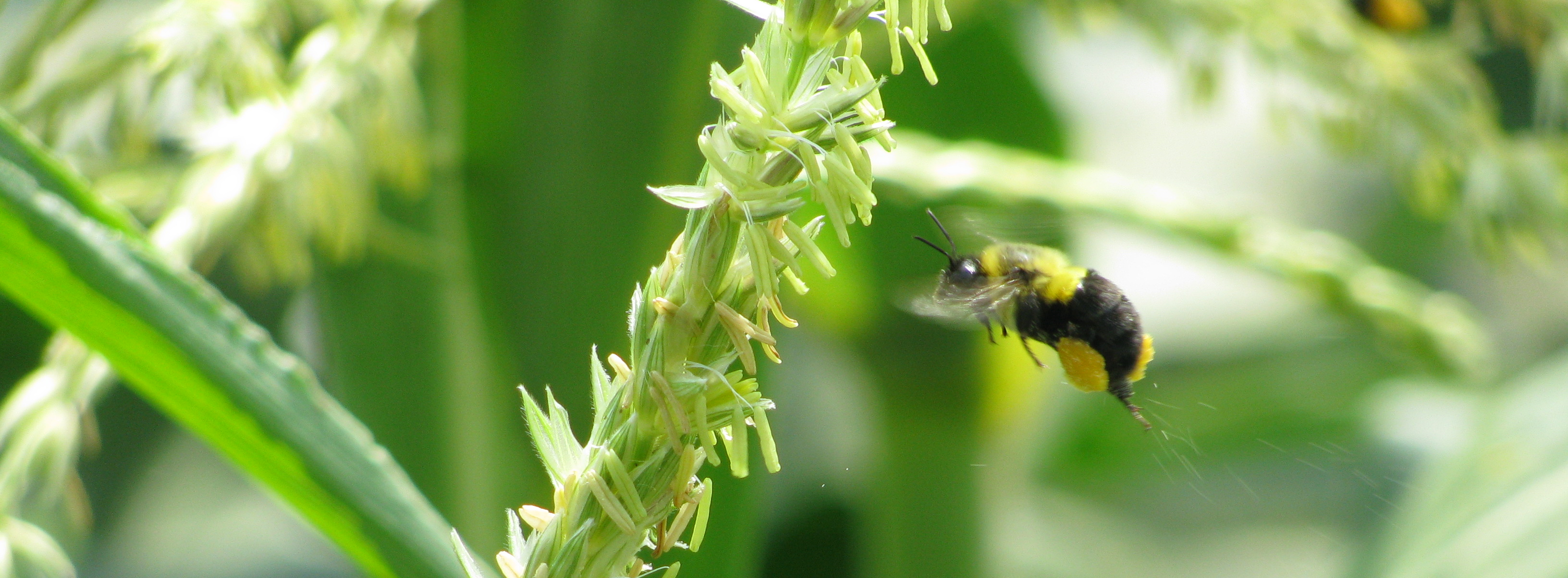
Systemic Insecticides:
- Absorbed by the plant and ingested by scale insects, causing internal organ damage and death
- Effective against scales hiding in difficult-to-reach areas like leaf crevices or woody tissues
- Can provide ongoing protection against future infestations due to residual effects
- Follow label instructions and recommended dosages to ensure plant safety and minimize risks tonon-target organisms.
Contact Insecticides:
- Work by directly targeting scales upon contact, either by suffocation or disrupting their nervous system
- Include insecticidal soaps and oils, which are generally more environmentally friendly options
- Soaps and oils have a mechanical effect, suffocating scales by blocking their breathing pores
- Oils disrupt the insect’s ability to feed and reproduce, leading to population decline
- Thorough coverage of plant surfaces is crucial for maximum efficacy
- Consider timing applications to coincide with periods of increased vulnerability in the scale insect life cycle
As with any pesticide use, it is essential to exercise caution and choose the most appropriate product for the specific scale insect species and plant being treated. Careful consideration should also be given to the potential impact on beneficial insects and the environment. It is recommended to consult with local extension services, professional pest control operators, or agricultural experts to obtain guidance on the most suitable chemical control options and ensure effective and responsible pest management.
Integrated Pest Management: Applying a Holistic Approach to Scale Insect Control
Applying a holistic approach to scale insect control is essential for effectively managing these pesky pests in your garden. Integrated Pest Management (IPM) combines various strategies to target scale insects at different stages of their life cycle, minimizing their impact on plants and promoting long-term pest control.

- Implement Biological Control Methods:
- Introduce natural predators such as ladybugs and lacewings to your garden.
- These beneficial insects actively hunt and consume scale insects, reducing their population.
- Maintain Overall Plant Health:
- Regularly inspect plants for signs of stress or weakness.
- Address any issues promptly to minimize the risk of scale infestations.
- Provide Proper Plant Care:
- Ensure plants receive proper nutrition, adequate sunlight, and appropriate watering techniques.
- Strengthen plants’ natural defenses against pests through good care practices.
- Avoid Excessive Use of Nitrogen-Rich Fertilizers:
- Implement sustainable gardening practices to promote the overall resilience of your garden ecosystem.
- Adopt Integrated Pest Management (IPM):
- Combine biological controls with cultural practices for effective scale insect management.
- Focus on environmentally friendly pest control methods.
- Maintain Vigilance:
- Continuously monitor your garden for signs of scale insects and other pests.
- Use proactive measures to prevent infestations from reaching damaging levels.
By following these steps, you can effectively manage scale insect populations, promote a healthy garden ecosystem, and maintain the beauty and productivity of your garden.
Prevention Strategies: Tips for Keeping Scale Insects at Bay
Keeping scale insects at bay requires a proactive approach to plant care. By implementing a few preventive strategies, you can significantly reduce the risk of scale infestations and maintain healthy, thriving plants. Here are some tips to help you prevent scale insects from wreaking havoc in your garden.
Here are some key points for preventing scale insect infestations:
- Regularly inspect plants for signs of scale insects like sticky honeydew, sooty mold, or bumps on stems and leave.
- Promptly remove and destroy any affected plant parts to prevent spread of pests
- Dispose of plant debris and fallen leaves away from the garden to eliminate potential breeding grounds
- Promote plant vigor through proper nutrition and watering to make plants less susceptible to scale
- Avoid over-fertilizing, as this can attract scale insects; use slow-release fertilizers in recommended amounts during appropriate seasons
- Prune trees and shrubs to promote air circulation, which helps prevent infestations of certain scale species
- Replace plants susceptible to scale with less vulnerable alternatives
- Introduce plants that deter scale insects, such as herbs, strong-smelling bulbs, ornamentals, ferns, and certain trees
Remember, prevention is key when it comes to managing scale insects. By following these strategies and staying vigilant in your plant care routine, you can minimize the risk of scale infestations and maintain a beautiful and thriving garden.
The following table explain the key prevention strategies for keeping scale insects at bay:
| Scale Insect Prevention Strategies | Description |
|---|---|
| Regularly Inspect Plants | – Conduct frequent visual inspections to detect scale infestations early, especially on the undersides of leaves. |
| Encourage Natural Predators | – Promote the presence of beneficial insects like ladybugs and lacewings that feed on scale insects. |
| Use Horticultural Oil | – Apply horticultural oil during the dormant season to suffocate scale insects and their eggs. |
| Maintain Plant Health | – Ensure optimal plant care, including proper watering and fertilization, to reduce plant stress and susceptibility. |
| Reflective Mulches | – Employ reflective mulches to create an environment less favorable for scale insects. |
| Isolate New Plants | – Quarantine and closely monitor new plants before introducing them to the garden to prevent introducing scale insects. |
By implementing these prevention strategies, you can significantly reduce the risk of scale insect infestations and promote the overall health of your plants. Adjust your practices based on the specific needs of your garden and the types of plants you are growing.
Plant Selection: Choosing Resistant Varieties to Minimize Scale Insect Risks
Choosing the right plant varieties is an essential aspect of scale insect management in gardens and landscapes. By selecting resistant varieties, gardeners can mitigate the risks of scale infestations and reduce the need for chemical pesticides. Resistant plant varieties exhibit either inherent or acquired characteristics that make them less susceptible to scale insects.

Inherent Resistance
- Identify Naturally Resistant Plant Varieties:
- Look for plants with physical characteristics such as waxy coatings or tough leaf surfaces that repel scale insects.
- Choose Plants that Release Natural Deterrents:
- Select plants that produce compounds deterring scale insects from attaching or feeding.
Acquired Resistance
- Consider Breeding and Genetic Modification:
- Opt for plant varieties bred or genetically modified to have enhanced resistance to scale insects.
- Look for plants with genes that produce toxins harmful to scale insects, interfering with their feeding and reproduction.
Selecting Resistant Varieties
- Research Local Scale Species:
- Identify the specific scale insect species prevalent in your region, as they may prefer certain plant species or families.
- Consult Gardening Resources:
- Use gardening books, online resources, and local agricultural extension offices to find information on resistant plant varieties.
- Seek advice from experienced horticulturists for recommendations tailored to your area’s conditions.
Implementing Resistant Plants
- Plant Resistant Varieties:
- Incorporate naturally or acquired resistant plant varieties into your garden to reduce the risk of scale infestations.
- Monitor Plant Health:
- Regularly check the resistant plants for signs of stress or pest activity to ensure their effectiveness against scale insects.
By choosing resistant plant varieties, gardeners can proactively combat scale insect infestations while promoting sustainable and environmentally friendly gardening practices. However, it’s essential to remember that resistance does not guarantee complete immunity, and regular monitoring and integrated pest management strategies should still be implemented to ensure optimal plant health.
Monitoring and Early Detection: Establishing a Systematic Approach to Scale Insect Management
Scale insects can be highly detrimental to the health and vitality of plants, making it crucial to establish a systematic approach for monitoring and early detection. By implementing regular monitoring practices, gardeners can identify scale infestations at the earliest stages, allowing for prompt and effective management strategies.
- Conduct consistent visual inspections of all plant parts, including leaves, stems, and branches.
- Look for the presence of scale insects and honeydew secretion.
- Use a magnifying glass to closely examine the plant surface for even the smallest pests.
- Thorough monitoring enables early detection, increasing the chances of successful management before significant damage occurs.
- Regularly check for signs of scale presence, such as ant activity on plants, honeydew, and sooty mold on leaves
- Inspect approximately 5 trees per hectare, checking 5-10 twigs or branches per tree; if more than 5-10% of sampled trees are infested, take direct control measures
- Monitor weekly for symptoms like yellow halos around feeding points, wilting leaves, fruit drop, and dieback of twigs and branches
Seeking Professional Help: When and How to Engage Pest
When facing a scale insect infestation that seems to be beyond your control, it may be time to seek professional help. Pest control specialists are equipped with the knowledge, experience, and resources to effectively manage scale insect populations and protect your plants. They have specialized training in identifying different species, understanding their life cycles, and implementing appropriate control measures.
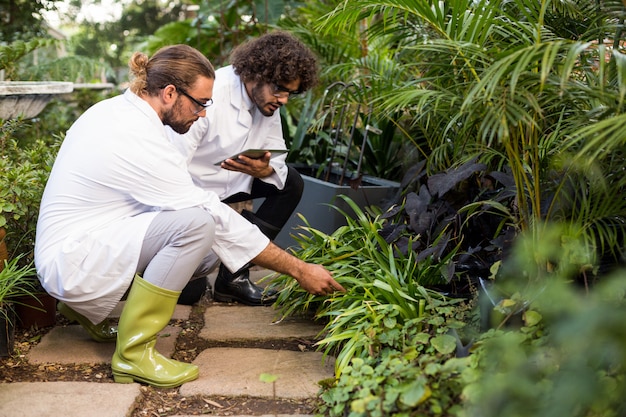
- Assess the Infestation:
- Determine if the scale infestation is widespread or recurrent.
- Evaluate the extent of damage to your plants.
- Engage Professional Pest Control Services:
- Contact a reputable pest control service for an assessment.
- Choose experts with experience in handling scale infestations.
- Professional Assessment:
- Allow the pest control experts to inspect your garden.
- They will identify the specific scale species and assess the severity of the problem.
- Develop a Tailored Control Plan:
- The pest control service will create a customized plan to address the infestation.
- The plan may include targeted treatments, such as horticultural oils, insecticidal soaps, or systemic insecticides.
- Implement Treatment:
- Follow the professional’s recommendations for treatment.
- Ensure the application of treatments is done correctly and safely.
- Monitor Plant Recovery:
- Regularly check your plants for signs of recovery and any remaining scale insects.
- Keep the pest control service informed of the progress.
- Prevent Future Infestations:
- Work with the pest control experts to establish preventative measures.
- Implement cultural practices, biological controls, and regular monitoring to keep scale insects at bay.
- Maintain a Healthy Garden:
- Continue with proper plant care, including optimal growing conditions and sanitation.
- Regularly inspect plants to catch any early signs of pest activity.
By following these steps, you can effectively manage severe scale infestations and ensure the long-term health of your garden with the help of professional pest control services.
For further information watch the video:
FAQ
When should I consider seeking professional help for a scale insect infestation?
It is recommended to seek professional help when scale insect infestations become severe or widespread, despite implementing control measures. Professionals have the expertise and resources to effectively manage the infestation.
How do I choose a professional pest control service for scale insect management?
When selecting a professional pest control service, consider their experience with scale insect control, certifications, and licenses. It is also important to check references and ensure they use environmentally friendly and safe pest control methods.
Can professional pest control services guarantee complete elimination of scale insects?
While professional pest control services can significantly reduce scale insect populations, complete elimination can be challenging due to the resilience of these pests. However, professionals can provide ongoing management strategies to minimize the impact of future infestations.
How do professionals determine the severity of a scale insect infestation?
Professionals assess the severity of a scale insect infestation by examining the extent of damage, population density, and the overall health of the infested plants. They may also conduct thorough inspections to identify the scale insect species involved.
What methods do professionals use to control scale insect infestations?
Professionals employ a range of methods depending on the severity and specific circumstances. These methods may include biological controls, cultural practices, physical removal, and the judicious use of pesticides. Integrated Pest Management (IPM) strategies are often employed to achieve long-term control.
How often should I engage professional pest control services for scale insect management?
The frequency of professional pest control services depends on factors such as the severity of the infestation, the susceptibility of the plants, and environmental conditions. It is advisable to consult with professionals to determine the most appropriate schedule for ongoing management.
Can professional pest control services help prevent future scale insect infestations?
Yes, professional pest control services can provide guidance on preventive measures to minimize the risk of future scale insect infestations. This may include recommendations on plant selection, cultural practices, and regular monitoring to detect early signs of infestation.
What are the potential risks associated with hiring professional pest control services?
Risks associated with professional pest control services may include the use of chemical pesticides, which can pose health and environmental hazards if not used properly. It is essential to choose licensed professionals who prioritize safety and employ integrated pest management practices.
Can I attempt to control scale insects on my own before seeking professional help?
Yes, you can try implementing some control measures on your own, such as physical removal or cultural practices. However, if the infestation persists or worsens, it is advisable to seek professional help to ensure a more effective and long-term solution.
How much does professional scale insect management typically cost?
The cost of professional scale insect management can vary depending on factors such as the size of the infestation, the complexity of the treatment, and the region. It is recommended to obtain quotes from multiple reputable pest control services to compare costs and services provided.

Studied Agricultural Engineering-Plant Protection at University of California, Davis.
Head of Content writing team at Southelmontehydroponics.com

